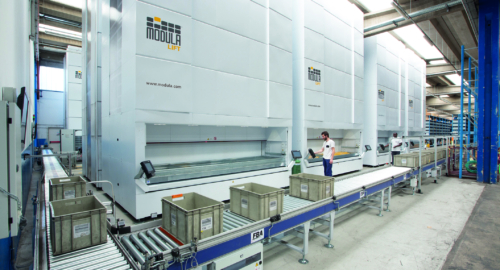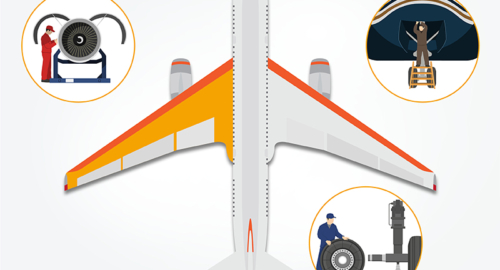It is well known that keeping a certain amount of merchandise in the form of stock involves costs. In fact, stock is a cash asset which requires a large capital investment and has a direct effect on delivery to customers.
Why does stock accumulate?
The reasons vary greatly, but on the whole stock is essential for covering any shortcomings caused by the temporal inconsistency between supply and demand. To counter this need in the 1980s, the Just in time method was born, an Oriental production philosophy developed within Toyota. “Just in time” fits into a broader methodology of organising production without any waste, pursuing continuous improvement with the aim of creating warehouses without stock and purchasing only when there is demand. Obviously in many realities, if not exactly in all of them, this is a hypothetical and unrealistic attitude. However, the one thing that we must learn from this philosophy is that limiting the quantity and value of stock stored in warehouses allows large capital savings.
If the goal is to keep stock to a minimum, it is a given that purchases will have to be much more frequent, with little chance of volume-related discounts and high costs in terms of order preparation and despatch times for the procurement department.
On the one hand, therefore, we have the cost of ownership, referring to the stock of inventory goods, on the other the cost of supply, linked to handling a large number of orders.
Inventory management, or stock management, aims to reach a compromise between these two costs while at the same time meeting overall business choices and goals as well as the strategies of each department. In fact, while finance departments prefer to maintain low stock levels to save capital outlays, marketing departments push for high stock levels so as to allow them to offer and increase discounts.
Stock management models: the variables to consider
There are multiple stock management models and there is not one that suits every company.
When deciding which road to go down and what system to adopt, you must consider the following variables:
- Company goals and business types
- Type of stocks: raw materials, semi-finished products or finished products
- Goods Rotation Index: indicates the number of times that goods are “rotated” or “renewed” over a certain period of time within the warehouse
- Lead time of supply, that is, the time it takes from issuing the order to receiving the ordered goods
- Demand characteristics: volatility, unpredictability, etc. Two types of demand can be identified: independent demand refers to market conditions and is therefore dependent on factors outside the company and therefore by nature unpredictable, and dependent demand refers to companies that build and assemble a finished product. This is predictable and strictly depends on the final product
- Available resources to devote to managing and organising stock: human capital and/or physical capital
Given these variables, there are three main questions to ask yourself and to get answers to:
- How much to order?
- When to order?
- How to check the efficiency of the system?
Let’s look at this last aspect.
Managing stock efficiently and effectively
As mentioned earlier, there are several systems for managing stock, and not one can be considered the best across the board. The optimal solution differs from company to company, but there are some common principles that can be implemented regardless of the type of system used and which guarantee effective stock management.
Ascertain the priority of items in the warehouse
An easy way to do this is to use the ABC system and subdivide the products into three categories based on their usage value (high, middle, and low). Generally, it is common to implement this system using Pareto’s law, according to which 80% of sales come from 20% of all items. Items in category A will therefore be those that need more attention. Classifying them in this way allows you to always keep control over availability of the most important stock for production, manage its reordering more efficiently and avoid production downtime.
Always keep inventory data up-to-date
Whenever an action takes place within the warehouse you have to monitor it because it changes the total value of your stock. Only with an up-to-date and true representation of your stock situation at any time can you make effective management decisions.
Organize space effectively
Plan shelf and compartment layouts so that they can provide a suitable environment for locating and picking items as quickly as possible. It must also be dynamic so that it can be reorganised according to future needs.
Adopt management software
With software, you can automate management of stock movements and simplify it, keep track of all transactions and reduce errors.
And what if there were a solution to automate and simplify stock management?
This topic gets talked about more and more, and the answer is automatic vertical tray warehouses. This is a simple solution, and much simpler than fully automatic warehouses. These automatic machines are able to facilitate the management of all items in the warehouse, including stocks. Arranged vertically, they have an automatic tray handling system and an operator interface that allows you to handle picking and loading requests with just one click. In most cases, they integrate perfectly into your company’s network so that you can monitor all actions performed by any operator.
This solution requires only a limited budget (depending, of course, on the number of machines you want to acquire), and you can keep an eye on your stock situation which is updated in real time. Not only that, automatic vertical warehouses are able to manage your stock automatically and report any items in need of reorder.
Remember that they are machines, and so they will remain. There is therefore a certain amount of research necessary on your part beyond this current session to find the best solution for your business in order to decide when and how many to order. The above points remain valid (variables and decisions to be considered), but if properly planned, inventory management and automatic vertical warehouses can offer an absolutely optimal solution: they reduce errors (almost to the point of eliminating them entirely), save space, time and ensure maximum security for your goods and safety for your operators.
Ideas for warehouse reorganization



